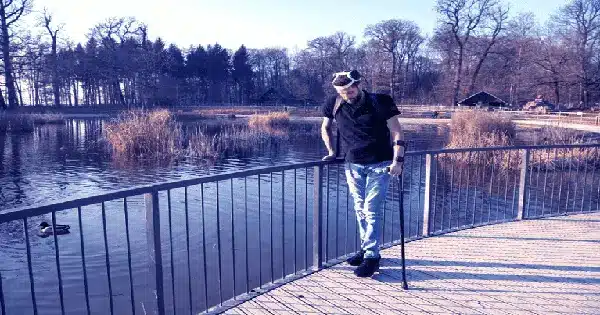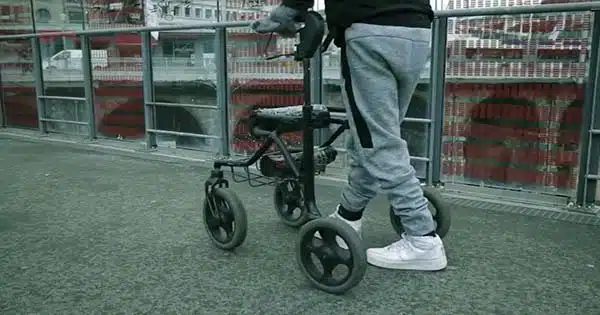A guy with Parkinson’s disease has shown a significant improvement in his ability to walk without falling as a result of an experimental spinal implant in his lower back.
Marc Gauthier, 63, of Bordeaux, France, was diagnosed with the neurodegenerative disease more than 20 years ago. Gauthier’s legs would continually lock up, forcing him to fall down numerous times a day, as the condition is marked by uncontrollable movements and coordination issues. This is no longer the case as a result of the implant.
The implant is a neuroprosthetic device that sends electrical stimulation to the spinal cord in the hopes of activating damaged neural circuits that affect how people walk. This strategy has previously been employed in persons with Parkinson’s disease, with implants placed over the upper and middle spine, but the effects were relatively modest.

Researchers inserted the device in Gauthier’s lower back, over a region known as the lumbosacral spinal cord; when activated, this activates the neurons connecting the spinal cord and leg muscles, rectifying “incorrect” messages from the brain caused by the condition. Gauthier’s amount of stimulation was customized by evaluating how he walked prior to the operation.
Movement sensors on Gauthier’s legs now detect when he walks, causing the implant to activate and send electrical stimulation to his spine. As a result, even two years after the implant was implanted, his walking ability has improved significantly. When researchers re-analyzed his walking after implantation, they discovered that it was more like that of a healthy control than a fellow Parkinson’s sufferer.
“Every Sunday, I walk around 6 kilometers [3.7 miles] to the lake.” “It’s amazing,” he told the Guardian.
While the medication was effective in this example, it is unclear whether it will become a common treatment for the condition, which currently has no cure. “There’s not enough data in this paper to conclude that this approach will be better than current standard treatments,” said Susan Harkema, a neurologist at the University of Louisville in Kentucky, in a statement to Nature.
More research with more participants is needed to determine whether this type of spinal cord stimulation is an effective treatment for Parkinson’s disease. The research team intends to test the treatment on another six individuals next year.
Whatever the outcome of that study, the treatment has undoubtedly had a huge impact on Gauthier’s daily life. “I would trip and fall five to six times a day.” I, too, would frequently stay at home and was forced to cease working three years ago. “Walking into a store, for example, was previously impossible due to the freezing of gait that would occur in those environments,” Gauthier stated at a news conference.














